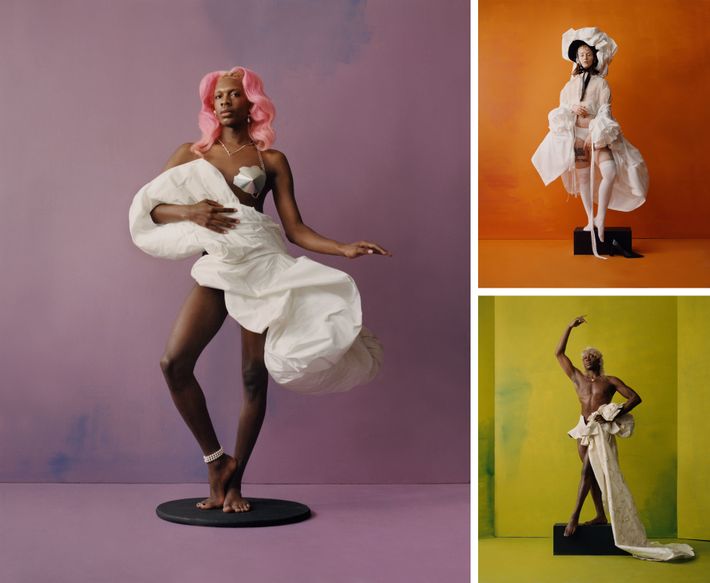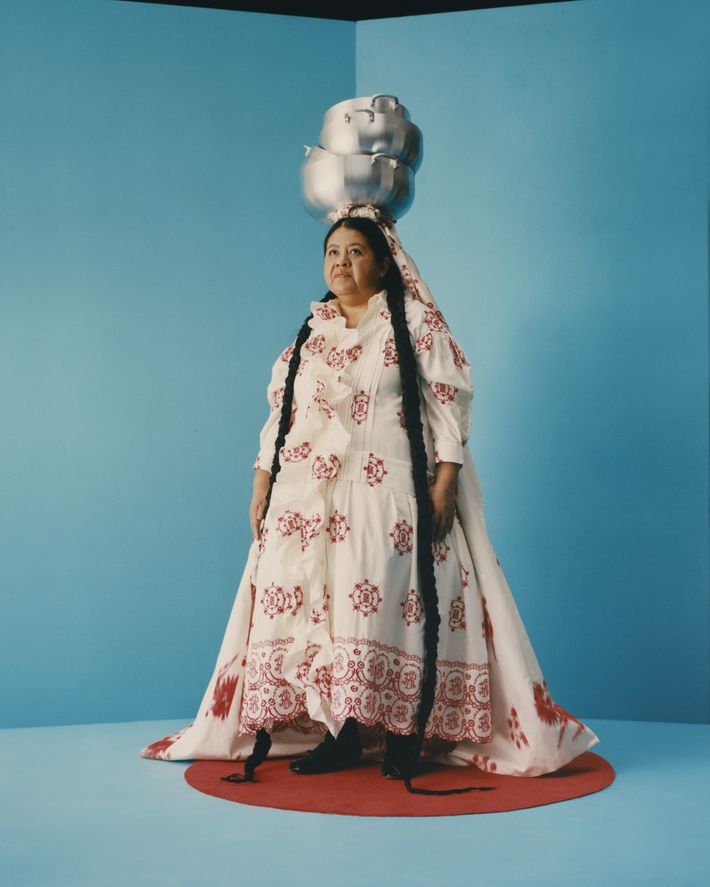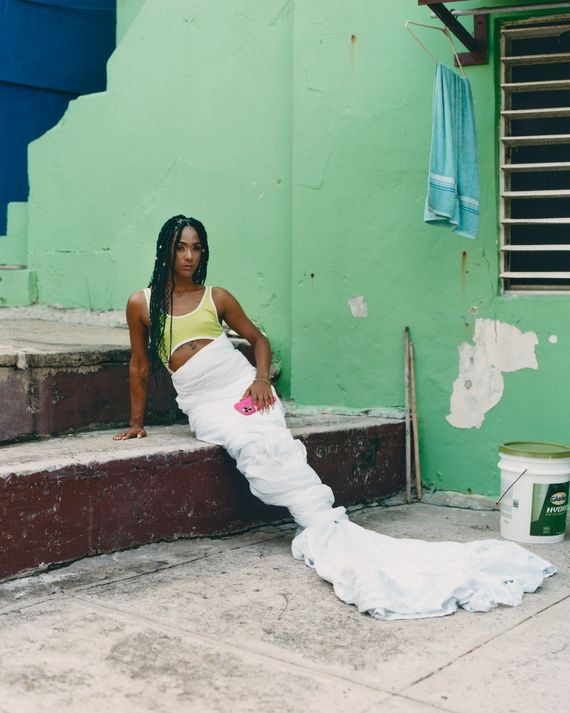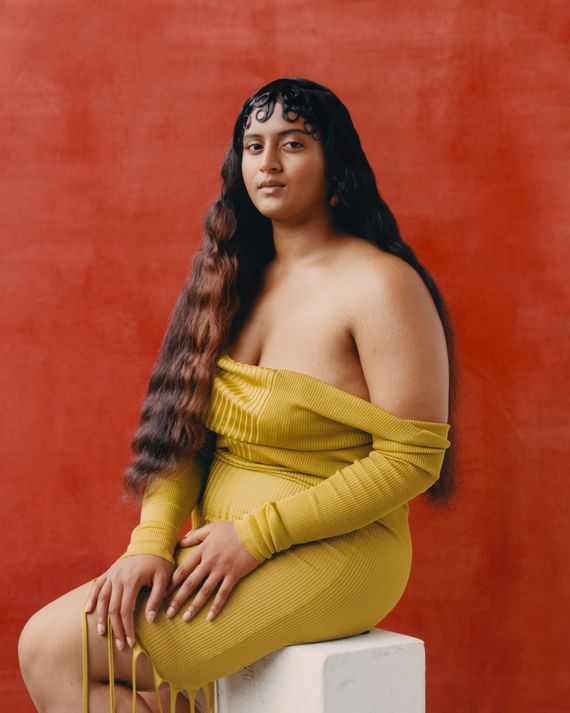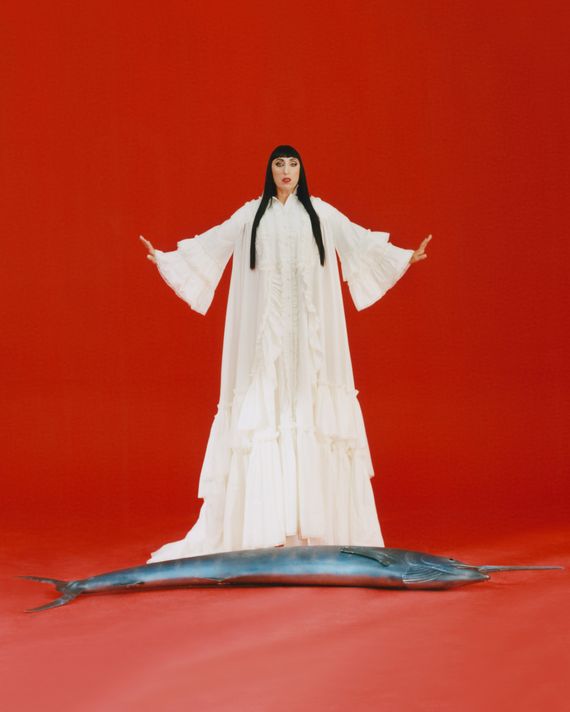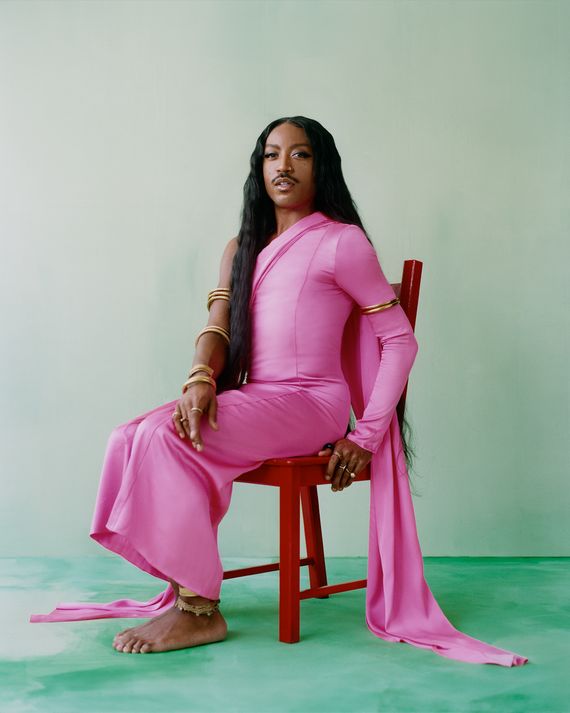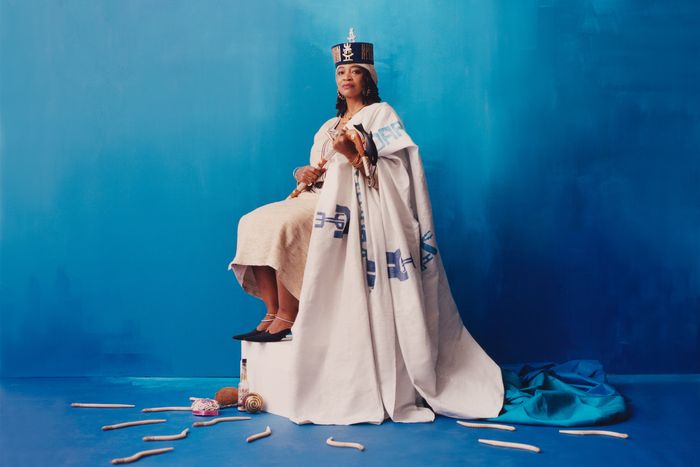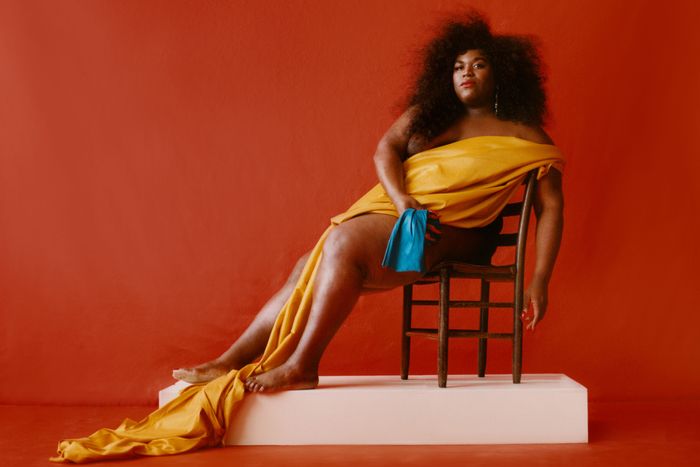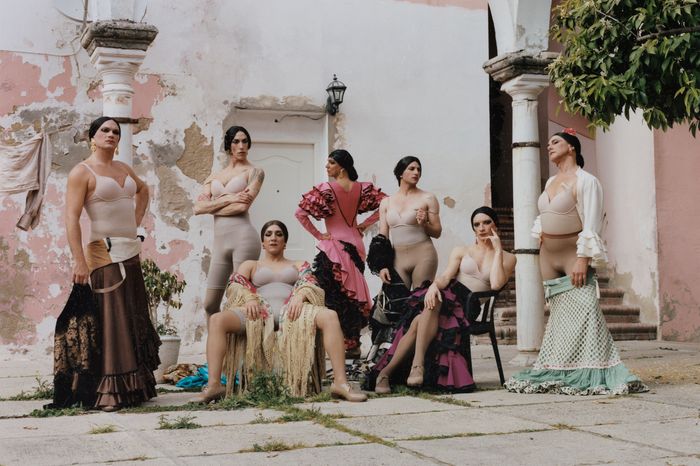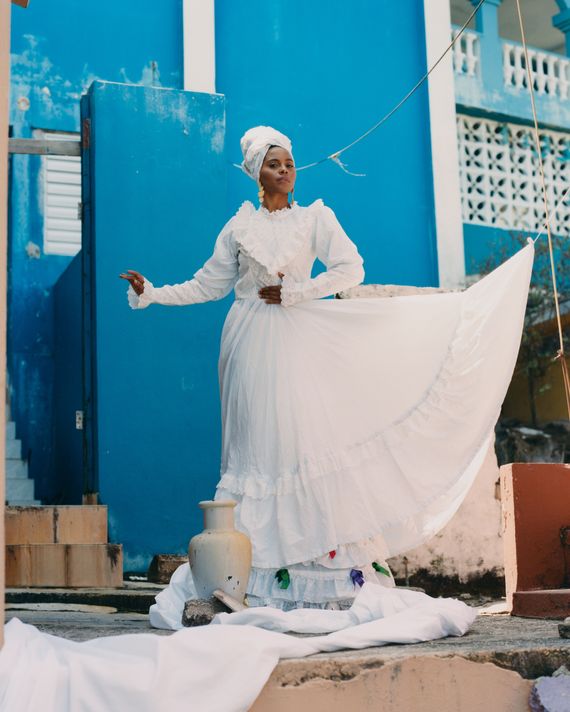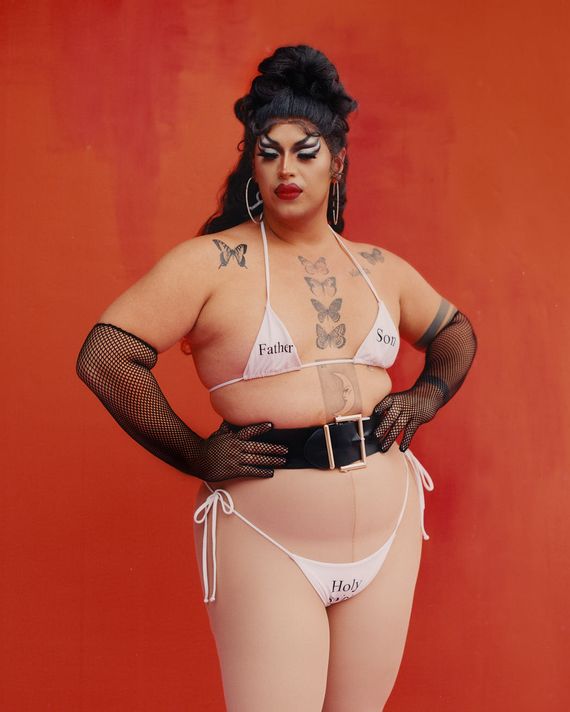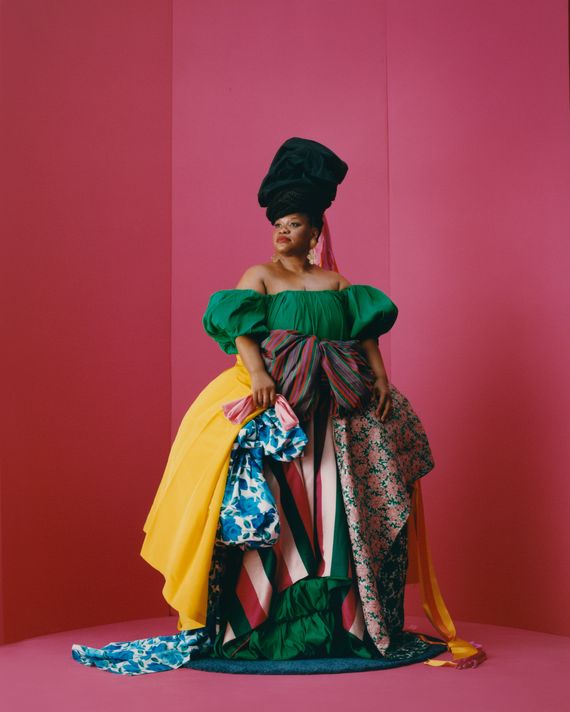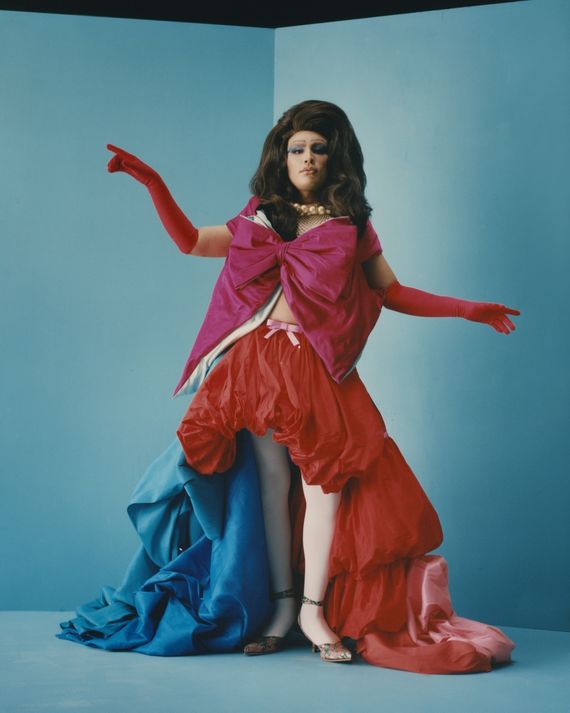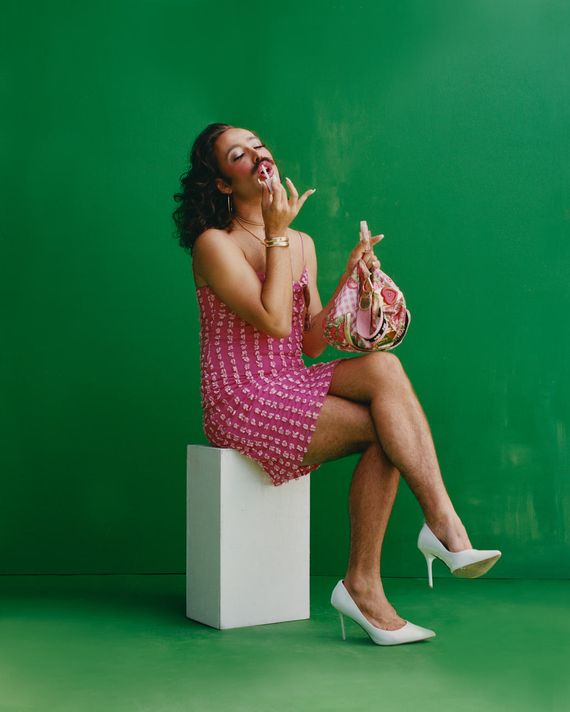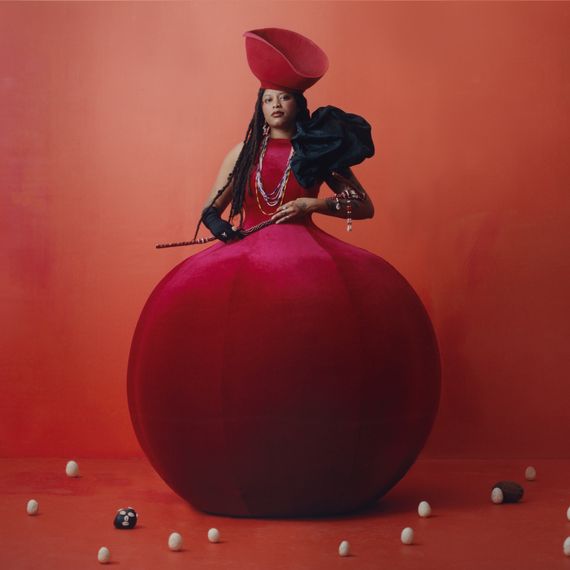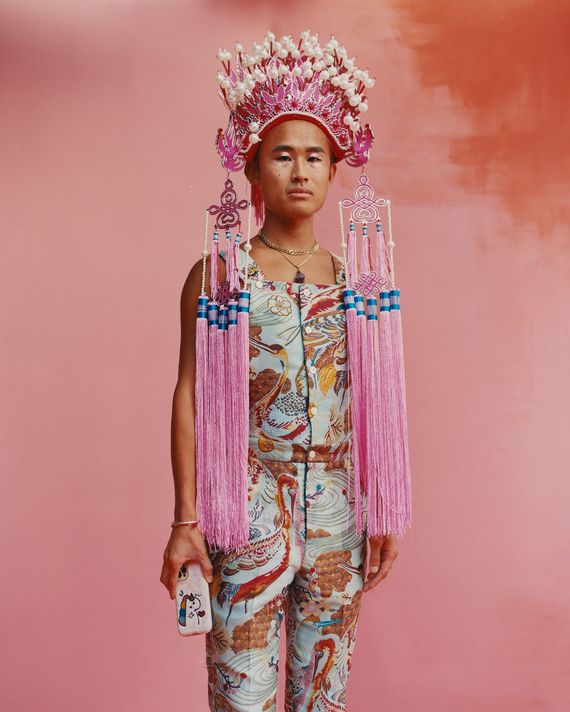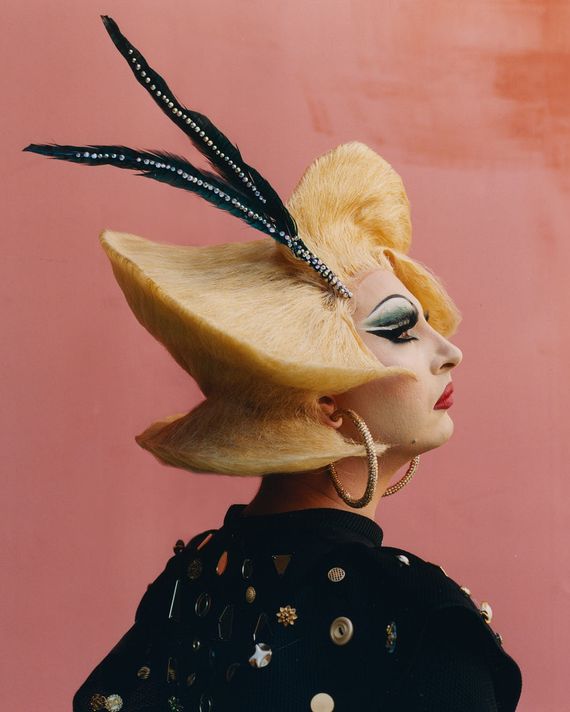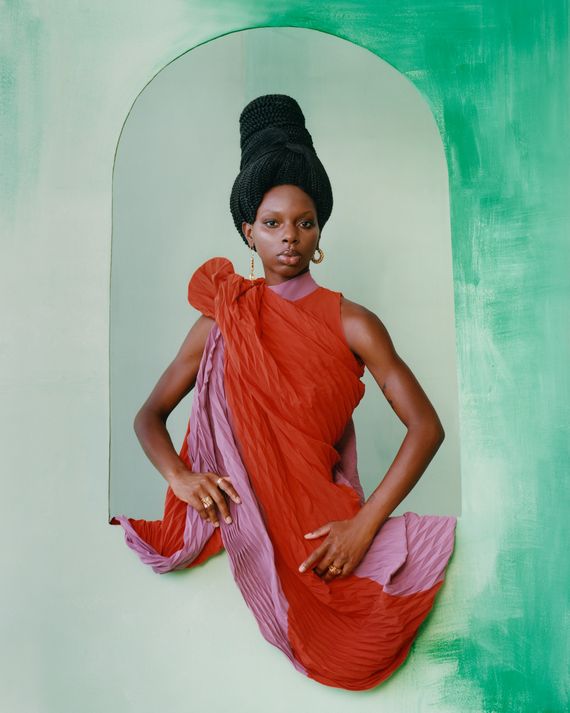
Camila Falquez has a gift: She can see deities everywhere, she tells me, “and they’re normally overlooked.” So it’s fitting that the 32-year-old New York–based photographer’s new gallery show is titled “Gods That Walk Among Us” — though she didn’t come up with the phrase herself. The words found her while walking through the streets of New York City. When she read the phrase on the corner of a Bushwick mural of two Indigenous people, a shiver passed through her body. “I’m like, Oh, wow, this is what I do,” she tells me over Zoom during a brief trip to Mexico City. “It’s very clear to me when I’m in front of gods and queens.”
That sacred sensibility underpins Falquez’s process. If her subjects are gods, she is their priest; if they are royalty, she says, she’s their servant. The 28 portraits that make up “Gods That Walk Among Us,” opening June 2 at the Hannah Traore Gallery on the Lower East Side, share a ceremonious extravagance. The images evoke Greco-Roman statues, court portraiture, religious art, and folk shrines. But instead of gods, martyrs, or aristocrats, Falquez’s subjects are an intergenerational cast of activists, drag queens, performers, and artists. Many are immigrants; most are Black and brown; the majority are LGBTQ+. Her images draw from centuries of visual motifs to reimagine whose bodies can be vessels of the gods. “These people walk among us,” Falquez explains, “and hopefully that helps people realize that maybe power lies somewhere else.”
While Falquez’s choice of subjects is transgressive, her visual vocabulary plays on the vernacular of the western art canon. She was born in Mexico City to Colombian parents, and they emigrated to Spain when she was a young child. Falquez spent her days in her mother’s painting studio and danced salsa after dinner with her father. Her parents were determined to take advantage of Europe’s cultural offerings. “As a Colombian, when you arrive to Europe, the idea that you can safely drive and within hours change countries and cultures was mind-blowing for my family,” she recalls. “We would drive to Milan, Venice, Napoli, Paris, Munich, Brussels, and we would go to all of the museums that you could imagine.” Then, she laughs, “I understood how fucked up that is.” While European art shapes her visual vocabulary, she notes that her experience as an immigrant, first in Spain and then New York, has formed her gaze. “I’m saying Look around because the woman that washes your clothes might actually be a queen and you don’t know,” she says.
Falquez’s subjects hold their bodies in bold silhouettes against vivid walls, often regarding the viewer with a firm, serene gaze. Designer and trans-rights activist Qween Jean reposes under a draped cloth the saffron of Buddhist monks’ robes. Chef Natalia Méndez of the Bronx restaurant La Morada balances a gleaming headdress of pots on her head. Performers Josue Hart, Bobbi Menuez, and Basit Com strike balletic poses amid sculptural clouds of white fabric. The bold colors bespeak a joyful defiance; the models’ dignity is tinged with resistance.
Each image appears meticulously choreographed, the result of an elaborate staging process. “I am a photographer, but that’s just one part of it. I’m not someone that walks around with a camera,” Falquez explains. “My process is finding people, creating a set, creating a universe. It’s almost like a performance. Taking the photo is a small part of that.” She recently began renting her own photo studio in Ridgewood called Studio Delicia. Before each shoot, she covers it with canvas she paints herself. Falquez describes the pre-photoshoot production process as a “ritual”: She visits Home Depot to hunt for new paint colors. She bikes to the Flower District and fills her basket with blooms. She shops for chairs at the thrift store around the corner. “Literally, my life is carrying things around,” she jokes of her prop-gathering process. “Then I call my Colombian chef friend who brings a big rice dish, and I go to the Colombian bakery,” she narrates. The day of the shoot, she plays boleros and salsa music. “The studio just becomes alive,” she says. “It’s almost like an exaggerated action of extreme care, like, Welcome to my house. You’re safe. I’m here. We’re going to create endless things.”
The show is underpinned by a politics of community care that coalesced for Falquez in 2020. The year marked a reckoning both personal and creative. “COVID, the protests, Pride — everything was a chain of finding your position in the world,” she recalls. “I finally got really connected to New York.” The portrait subjects include community leaders who spearheaded mutual-aid efforts during the pandemic lockdown: Méndez “fed the entire Bronx” during the COVID-19 lockdown, Falquez recalls; Qween Jean began a new chapter in her advocacy.
While most of the images in “Gods That Walk Among Us” have appeared in other venues, Camila is most excited about one of the two never-before-seen photos shot specifically for the exhibition: a group photograph of 13 trans and nonbinary people titled The Family. She sees the image, a sprawling tableau that evokes The Last Supper, as the centerpiece of the series. In the gallery as much as in her creative process, Camila insists on centering the subjects rather than her own authorship. “It’s our show, and I’m bringing all of these people with me. I’m just a very humble little worker for this royalty,” she says. “I don’t intend to be the center. I work for the people.”
Scroll below to see more images from the show.


